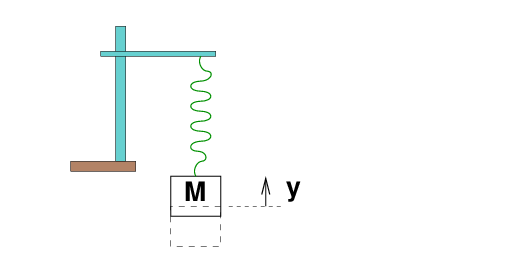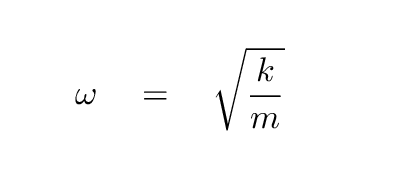
 Copyright © Michael Richmond.
This work is licensed under a Creative Commons License.
Copyright © Michael Richmond.
This work is licensed under a Creative Commons License.
You've been learning about the theory behind simple harmonic motion (SHM) .... so let's put it into practice.

Set up equipment at your table so that you can hang a m = 50 g mass from a silver harmonic spring (one of the silver mass hangers is a good choice for the mass). We will treat this mass as perfect; let's assume that it has no uncertainty at all.
Allow the mass to come to rest as it hangs from the spring. Then, displace it slightly upwards and release it. The mass will bob up and down, up and down.
So far, so good. Let's now connect this experiment to the theory of simple harmonic motion. In theory, the angular frequency ω of an item attached to a spring is related to the mass m of the object, and the spring constant k, like so:

(If you are wondering how to derive this for a mass hanging from a spring, you might look at the situation in a bit more detail. )
Do as much of these calculations as you can during the class period. If necessary, you may continue to work on them after class, and bring your results to the next class meeting.
Bonus! You computed the percentage uncertainty of three quantities: the period of the oscillation, the angular frequency of the oscillation, and the spring constant. Were all three percentages the same? If not, can you explain why?
 Copyright © Michael Richmond.
This work is licensed under a Creative Commons License.
Copyright © Michael Richmond.
This work is licensed under a Creative Commons License.